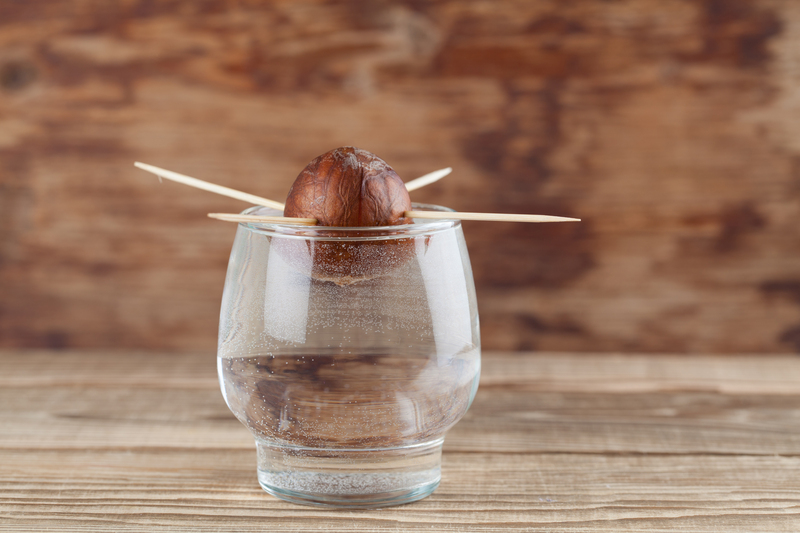Stay Ahead of the Drought: Protecting Your Lawn All Summer Long
As summer temperatures rise and rainfall declines, drought conditions can quickly wreak havoc on your carefully cultivated lawn. Yet, lush, green grass need not become a distant memory during arid months. Staying ahead of the drought and protecting your lawn all summer long requires a blend of knowledge, preparation, and proactive lawn care strategies. In this comprehensive guide, we'll walk you through expert tips and actionable steps to keep your yard healthy, vibrant, and drought-resistant, even in the hottest, driest weather.
Understanding Summer Drought and Its Impact on Lawns
Drought describes an extended period of deficient rainfall or low moisture levels. In the context of lawns, drought means your grass isn't receiving enough water to support robust growth. Without intervention, this can lead to:
- Browning or yellowing grass blades
- Thinning turf and bare patches
- Soil compaction and erosion
- Increased vulnerability to pests and disease
Recognizing drought stress in your lawn early is essential. By adjusting your lawn care routines and leveraging water-saving strategies, you can stay ahead of dry spells and maintain a thriving landscape throughout summer.

Key Steps to Drought-Proof Your Lawn
1. Select the Right Grass for Your Region
Not all grasses are created equal when it comes to drought tolerance. Warm-season grasses, such as Bermuda, Zoysia, and Buffalo grass, are naturally more resistant to drought thanks to their deeper rooting systems and reduced water requirements. If you're reseeding or sodding, choose a grass variety recommended for your climate--consult your local extension service for the best fit.
2. Practice Smart, Deep Watering
The key to drought-resistant lawns is efficient watering:
- Water deeply, but less often: Encourage deep root growth by thoroughly soaking the soil to a depth of 6-8 inches at each watering session. This helps your grass access moisture held deeper in the ground during dry spells.
- Water early in the morning: Schedule irrigation for before 9 AM to maximize absorption and minimize evaporation losses from midday sunshine.
- Use efficient irrigation systems: Consider soaker hoses, drip lines, or adjustable sprinklers to deliver water to roots--not to sidewalks or driveways.
*Pro Tip: To test soil moisture, push a screwdriver into the ground--if it goes in easily, the soil is moist; if not, it's time to water your lawn.
3. Raise Your Mower Height
Longer grass blades shade the soil, reduce heat stress, and minimize water loss through evaporation. During drought or high heat:
- Set your mower blade 1-2 inches higher than usual.
- Never remove more than one-third of the grass height at a time.
- Keep mower blades sharp to avoid tearing and damaging grass.
Letting your lawn grow a bit taller is one of the simplest yet most effective ways to stay ahead of the drought this summer!
4. Apply a Healthy Layer of Mulch and Grass Clippings
Mulching provides dual benefits: It locks in precious ground moisture and shades roots from intense sunlight. Leave grass clippings on the lawn after mowing ("grasscycling")--this organic matter returns nutrients and moisture to the soil. For landscape beds and around trees, use 2-3 inches of shredded bark or compost as mulch.
5. Aerate Compacted Soil
Over time, lawns can become compacted from foot traffic, mowing, or pets. Compacted soil prevents water from penetrating down to grass roots. Early spring or fall aeration--using a core aerator--breaks up dense soil, improving water, air, and nutrient movement. Looser soil encourages deeper, more drought-resistant root growth.
Nourish Your Lawn for Drought Resistance
6. Fertilize Wisely--but Don't Overdo It
A well-nourished lawn can withstand drought stress better. However, avoid fertilizing during the hottest, driest part of the summer. Instead:
- Apply a slow-release, organic fertilizer in early spring or fall.
- Supplement with compost or a balanced lawn food mix.
- Never fertilize thirsty or stressed grass--it can "burn" the lawn.
Overfeeding can spur rapid, shallow root growth that makes grass more vulnerable to summer drought.
7. Spot-Treat Weeds and Pests
Weeds compete for water and nutrients, putting additional stress on your lawn. Likewise, insect infestations and fungal diseases can take hold when grass is weakened by drought. Remove weeds by hand or with targeted spot herbicides. Monitor for grubs and other pests, and treat only affected areas to minimize chemical impact.
Adopt Water-Saving Lawn Care Strategies
8. Use Drought-Friendly Lawn Alternatives
Consider blending traditional turf grass with groundcovers, native grasses, or low-water-use plants in less-trafficked areas. Wildflower mixes, creeping thyme, or white clover can provide green cover while dramatically reducing water consumption. Xeriscaping--using drought-tolerant landscape design--further cuts irrigation needs and creates visual interest.
9. Install a Rain Gauge and Monitor Weather
Knowing exactly how much water your lawn receives--naturally and from your irrigation--keeps you from overwatering (or underwatering) during drought. Place a rain gauge in your yard to track precipitation. Adjust your watering schedule in response to rainfall forecasts for optimal efficiency and conservation.
10. Harvest and Use Rainwater
- Set up rain barrels or cisterns under downspouts to collect runoff during storms.
- Use harvested water for spot-watering trouble areas or gardens during dry periods.
- This sustainable technique helps conserve municipal water supplies and save money over time.
Long-Term Solutions: Building a Drought-Resilient Lawn Ecosystem
The Role of Healthy Soil
Aerated, nutrient-rich, organic soil stores more moisture and promotes root development, making your lawn less dependent on frequent watering. Test your soil yearly to adjust pH and nutrient levels as needed. Incorporate organic matter such as compost or worm castings to improve structure and water retention.
Lawn Renovation and Overseeding
After a tough drought season, you might notice persistent bare patches or thinning turf. In early fall:
- Overseed with drought-tolerant grass types suited to your region.
- Topdress with a mixture of compost and quality topsoil to boost seed germination and root growth.
Gradually, this strengthens your entire lawn ecosystem and makes it more resistant to future dry spells.
Drought-Tolerant Landscaping Beyond the Lawn
Extend your water-wise approach to the whole yard by choosing trees, shrubs, and perennials known for thriving with little irrigation. Group plants by water needs, prioritize native species, and install drip irrigation where possible for maximum efficiency.
Frequently Asked Questions: Summertime Lawn Care in a Drought
How often should I water my lawn during a drought?
Watering frequency depends on your grass type, weather, and soil conditions. Generally, water no more than once or twice a week, but apply enough to soak the soil 6-8 inches deep. Less frequent, deep watering encourages roots to grow downward toward moisture reserves.
What's the best mowing height during hot, dry weather?
Set your mower to leave grass blades at least 3 inches high in summer (even higher for some species). This taller height shades soil, reduces weed germination, and lowers water loss.
Should I fertilize my lawn in the summer?
It's best to avoid heavy fertilization during peak heat and drought. Over-fertilizing stresses your grass and increases its water needs. Instead, fertilize in spring or early fall, and use compost or slow-release products for steady nutrient supply.
Can I let my lawn go dormant during drought?
Yes. Many grasses are naturally adapted to go dormant--turning brown but not dying--when water is scarce. If you let the grass go dormant, water monthly to keep roots alive, and avoid heavy traffic or mowing until recovery after rain resumes.

Your Summer Lawn Care Checklist
- Choose drought-tolerant grass species and overseed as needed.
- Deeply water in the early morning no more than 1-2 times per week.
- Raise mowing height and leave clippings on the lawn to conserve moisture.
- Mulch garden beds and trees to minimize evaporation.
- Aerate compacted soil in spring/fall for better water penetration.
- Minimize chemical use; spot-treat weeds and pests.
- Install rain gauges, barrels, and efficient irrigation systems.
- Embrace landscaping with native, drought-resistant plants.
Conclusion: Stay Ahead of the Drought and Enjoy a Beautiful Lawn All Summer Long
Protecting your lawn during the long, hot summer months calls for smart preparation and sustainable lawn care practices. By understanding your grass type, watering deeply and wisely, mowing high, mulching, aerating soil, and embracing drought-tolerant plants, you can build a resilient, green landscape--even as heat and dryness set in. Monitoring weather, using water-saving tools, and focusing on soil health further help you stay ahead of drought conditions and keep your lawn looking its best.
Put these tips into practice, and your lawn will weather the summer with minimal water stress--ready to bounce back at the first hint of fall rain. With a proactive approach, you can enjoy a lush, vibrant yard all season long, while conserving water and supporting the environment around you.
Ready to take your lawn care to the next level? Explore our site for more summer lawn maintenance guides and water-saving landscaping tips. Stay ahead of the drought, protect your lawn, and love your landscape--no matter the weather!
```